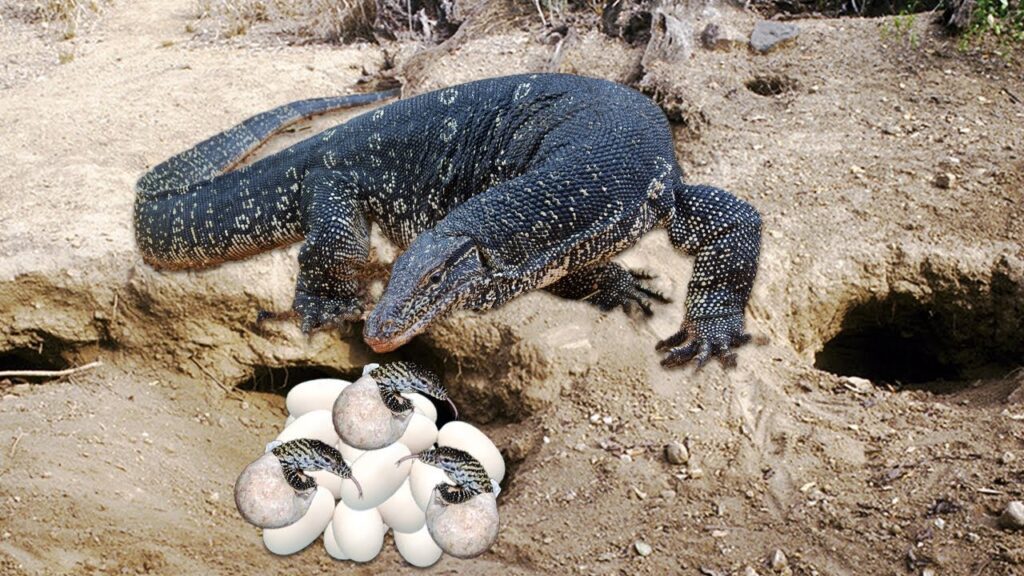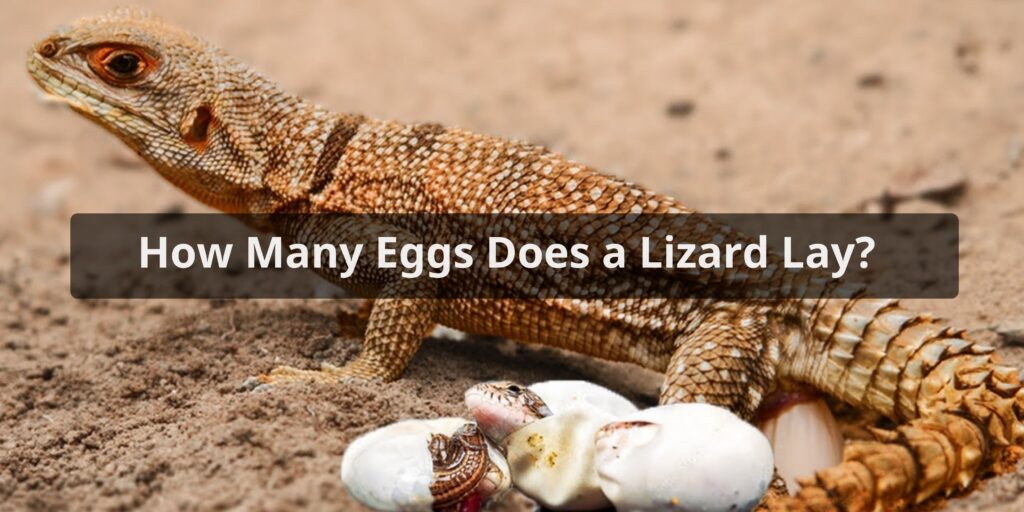Lizards are a diverse group of reptiles that can lay anywhere from 1 to 100 eggs in a single clutch, depending on the species. The number of eggs a female lizard lays depends on many factors, including:
Body Size
- In general, larger lizard species tend to lay more eggs than smaller species. For example, large iguanas can lay 20-70 eggs per clutch, while tiny geckos may only lay 1-2 eggs at a time. Larger females have more room to carry developing eggs and can expend more energy on reproduction.
Type of Lizard
- The specific type of lizard plays a major role in determining clutch size. Some groups, like skinks, tend to have smaller clutch sizes around 2-10 eggs. Other families like tegus are prolific egg layers, with clutch sizes ranging from 10-35 eggs.
Age of Female
- Older, more mature female lizards tend to lay more eggs per clutch than younger individuals. With age comes greater body size and reproductive experience, allowing older females to produce more eggs. For example, young bearded dragon females may lay 15-20 eggs in early clutches, while older females can lay up to 35 eggs per clutch.
Geographic Location
- The part of the world where a lizard lives impacts reproductive output. Lizards in warmer tropical climates with abundant resources tend to reproduce more than those in harsher environments. For instance, common collared lizards in the tropics can lay up to 35 eggs per clutch, while populations in cooler deserts may only lay 10 eggs.
Reproductive Strategy
- Some lizards are income breeders that rely on food intake to produce eggs. Others are capital breeders that use stored energy reserves. Capital breeding lizards like the Gila monster may only lay 2-12 eggs every 2-3 years when resources allow. Income breeders often lay multiple smaller clutches in a single season.
Individual Health
- The overall health and condition of a female lizard directly correlates with the number of eggs she can produce. Lizards in excellent health with robust fat stores and nutrient intake can expend more energy on laying large clutches. Sick or malnourished lizards may lay very small clutches, or none at all in extreme cases.
Examples of Clutch Sizes Across Lizards

To illustrate the variation in lizard egg laying, here are some examples of clutch sizes for different lizard species:
- Leopard geckos: 2 eggs (very small geckos)
- Green iguanas: 20-70 eggs (large herbivorous lizards)
- Bearded dragons: 15-35 eggs (popular pet lizards)
- Monitors: 10-60 eggs (large predators)
- Anoles: 1-2 eggs (tiny arboreal lizards)
- Skinks: 2-10 eggs (smooth, shiny lizards)
- Tegus: 10-35 eggs (South American lizards)
- Chameleons: 10-40 eggs (arboreal old world lizards)
- Collared lizards: 10-35 eggs (prominent head frills)
- Gila monsters: 2-12 eggs (venomous New World lizards)
As you can see, clutch size varies widely based on the traits and evolutionary strategies of each lizard species. From just 1-2 eggs in tiny geckos, to over 70 eggs in the largest iguanas, different lizards have adapted to produce optimal clutch sizes given their particular circumstances.
- Read more in What Do Lizard Eggs Look Like?
Conclusion
In summary, the number of eggs a female lizard lays depends on many factors, including body size, age, geographic location, reproductive strategies, and individual health. Smaller lizards tend to lay fewer eggs (1-10), while larger lizards can lay many more (20-100+). Clutch size also varies across lizard families based on their evolutionary history. Understanding what influences reptile reproduction helps provide insight into the diversity of clutch sizes seen across different lizard species. Monitoring egg laying in captive and wild populations remains an important way to assess the health and status of lizard species worldwide.
FAQs About How Many Eggs Does a Lizard Lay
How many eggs does a typical lizard lay in one clutch?
The number of eggs in a lizard clutch can vary significantly. It ranges from just a single egg for some species to over 100 for others. Factors like species, size, and environmental conditions influence clutch size.
Do all lizard species lay the same number of eggs?
No, clutch sizes vary widely among species. Some lizards lay small clutches, while others produce larger ones. This diversity is due to adaptations to different habitats and reproductive strategies.
Can the number of eggs vary among individual lizards?
Yes, even within a species, individual lizards might lay varying numbers of eggs. Factors like the lizard’s age, health, and overall condition can influence the number of eggs in a clutch.
Are there species that lay only a single egg per clutch?
Yes, some lizard species, like the tuatara, lay just one egg per clutch. This reproductive strategy allows them to invest more energy into nurturing and protecting that single egg.
Are there lizard species known for laying large clutches of eggs?
Yes, some lizards, like the Green Iguana, can lay clutches with a large number of eggs, sometimes exceeding 60. These species often inhabit environments with high predation rates.
Do environmental factors influence the number of eggs laid by a lizard?
Environmental conditions, such as food availability and climate, can impact clutch size. Lizards might adjust the number of eggs based on their perception of the environment’s capacity to support offspring survival.
What’s the relationship between a lizard’s size and the number of eggs it lays?
Generally, larger lizards tend to lay larger clutches. This relationship varies, but it often follows the principle that larger lizards have more resources to allocate toward reproduction.
How often do lizards lay eggs?
The frequency of egg laying varies by species and environmental factors. Some lizards lay eggs annually, while others might have multiple reproductive cycles within a year.
Are there differences in the frequency of egg laying between different lizard species?
Yes, different species have varying reproductive schedules. Some lay eggs more frequently, while others have longer intervals between clutches. These patterns are influenced by species-specific behaviors and ecological pressures.
How long does it take for lizard eggs to hatch after they are laid?
The incubation period varies widely among species, ranging from a few weeks to several months. Environmental factors like temperature and humidity influence the time it takes for the eggs to hatch.



